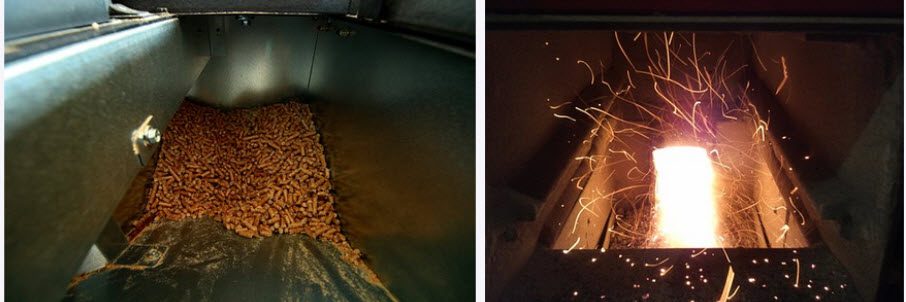Woodchips are used as biofuel in both large energy plants and in more small-scale operations. They can be used for both heat and electricity generation. Generally speaking, you will get more energy if you purchase one cubic metre of woodchips instead of one cubic metre of wood logs.
Today, special systems are available that can utilize both woodchips and wood pellets as fuel. Woodchips tend to be cheaper, while manufactured wood pellets are more uniform and have a controlled fuel value.
Woodchips used as biofuel tend to vary in size, and they can come mixed with sawdust, twigs and similar. Compared to wood pellets, this heterogeneous product is more likely to jam small feed mechanisms.

Converting a coal power plant into a woodchips power plant is not overly complicated or costly, since they both rely on heated water to produce steam that runs the turbines. At the time of speaking, the cost of woodchips is similar to the cost of coal, but these prices do not always change hand-in-hand on the world market.
Woodchips have been proposed as a more climate-conscious alternative to coal in power plants since coal is a fossil fuel and woodchips are not. Woodchips are a renewable source of energy, and forests can be skilfully managed to decrease environmental problems associated with logging and woodchips production.
In the ideal case, only the carbon dioxide which was drawn in during the tree´s growth will be released into the atmosphere when the wood is burned.
Burning woodchips
Woodchips are not standardized and will vary when it comes to factors such as size, shape, moisture content, and raw material.
Moisture content has a major impact on how much energy you get out of the wood chips, so handling is important. When trees are logged in cold winter temperatures and left to dry (protected from rain) over the summer according to industry common practice, you can expect a moisture content of 20%-25% in woodchips chipped in the fall. On average, they will have an energy content of approximately 3.5–4.5kWh/kg (~150–250 kg/cubic metre), but many factors can impact this.
In the United States, some attempts have been made to achieve more standardization of wood chips. If you are interested in learning more on this subject, we recommend reading the standard ANSI/ASABE AD17225-4:2014 FEB2018 Solid Biofuels—Fuel Specifications and classes—Part 4: Graded wood chips, which is approved by the American National Standards Institute. It is also known as the AD17225-4 Wood Chip Heating Fuel Quality Standard.
Within this framework, you will find the rules for the GF60 category. Woodchips adhering to the GF60 standardization are commonly used in smaller plants in the United States, e.g. for apartment buildings and small industries. GF60 woodchips are small, fine and dry, and the moisture content is within the 10% – 30% span. When it comes to size, the fractions are distributed as following: 0–3.5mm: <8%, 3.5–30mm: <7%, 30–60 mm: 80–100%, 60–100 mm: <3%, 100–120 mm: <2%.
Waste and emissions when using woodchips as bio fuel
Woodchip waste and emissions are considered less problematic than for fossil fuels, but should not be neglected.
When using woodchips (or any other wood) for in-house space heating, it is very important to ensure that the air quality does not become harmful to our health. Be especially vigilant against carbon-monoxide, but also 1,3-butadiene, benzene, acetaldehyde, and formaldehyde.
If certain techniques are adhered to, woodchips can be burned in a way that result in the production of biochar, which is almost the same thing as charcoal. It can be utilized as charcoal, or put back into the soil to provide the plants with minerals. Properly utilized biochar can also help with water and nutrient retention in soils where that is needed.
Cadmium
In a 2001 study, fly ash from woodchip combustion contained 28.6 mg of cadmium per kilogram of dry matter. Compared to fly ash generated by straw combustion, the cadmium was more heavily bound to the woodchip waste (which make it less prone to leaching into the environment). Still, adding woodchip waste to agricultural fields could result in a gradual build-up of cadmium.
The cadmium detected in the 2001 study was cadmium silicate (CdSiO3), which is a type of cadmium oxide.
Mercury
Just like coal, woodchips are known to contain some mercury, and burning woodchips can result in mercury emissions into the air.
When normal untreated woodchips are burned, the main source of mercury will usually be mercury oxide, which is solid and exist as PM 2.5 particulate matter.

